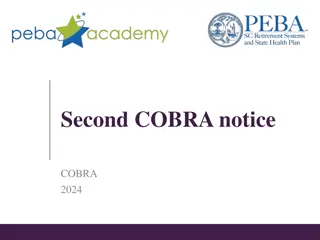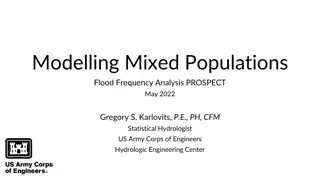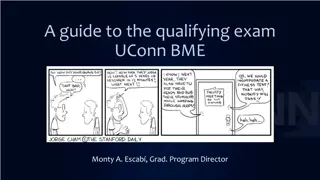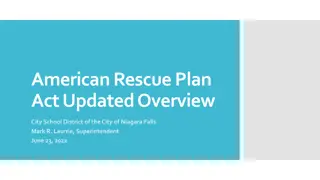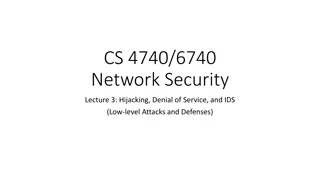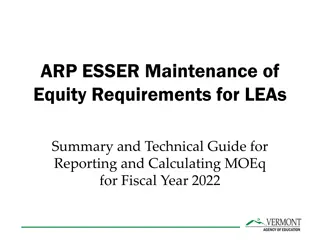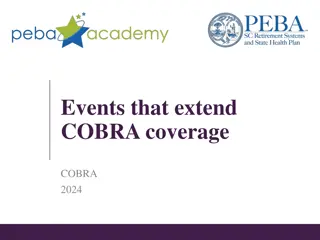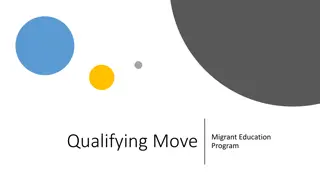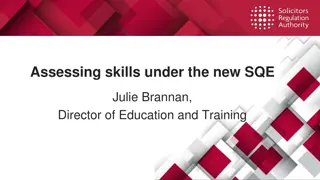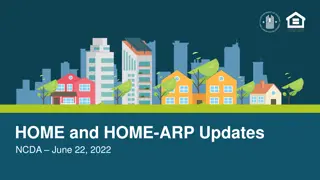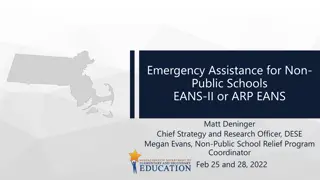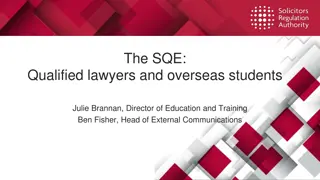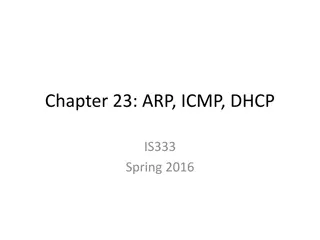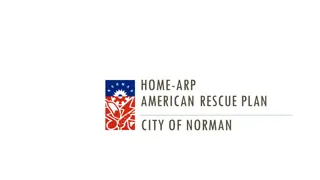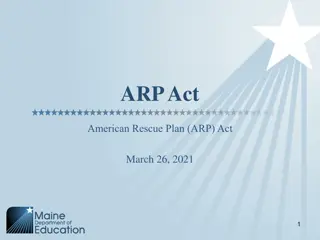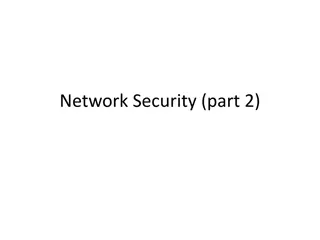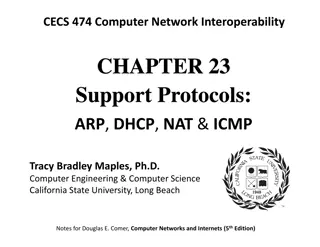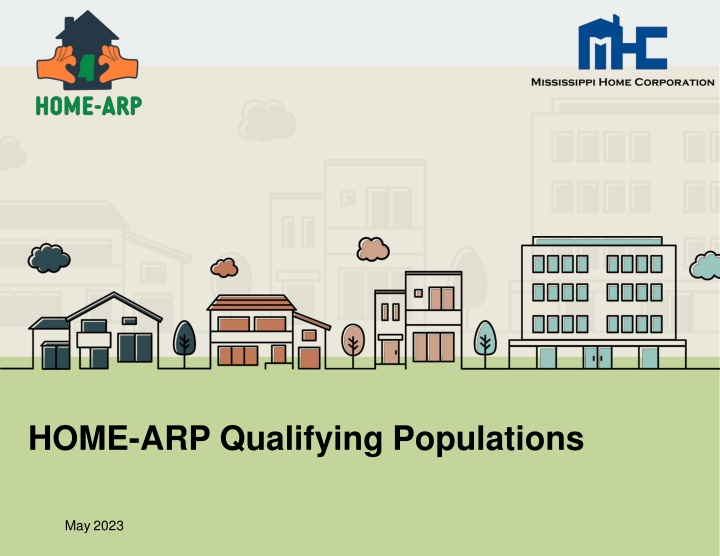
Understanding Homeless and At-Risk Populations for Assistance Programs
Learn about the categories of homeless and at-risk populations, including definitions and criteria for assistance programs. Explore HUD's definitions and qualifying conditions to help individuals and families in need of support for housing stability.
Download Presentation

Please find below an Image/Link to download the presentation.
The content on the website is provided AS IS for your information and personal use only. It may not be sold, licensed, or shared on other websites without obtaining consent from the author. If you encounter any issues during the download, it is possible that the publisher has removed the file from their server.
You are allowed to download the files provided on this website for personal or commercial use, subject to the condition that they are used lawfully. All files are the property of their respective owners.
The content on the website is provided AS IS for your information and personal use only. It may not be sold, licensed, or shared on other websites without obtaining consent from the author.
E N D
Presentation Transcript
HOME-ARP Qualifying Populations May 2023
QP- Homeless Homeless Definition Category 1: An individual or family who lacks a fixed, regular, and adequate nighttime residence, meaning: i. An individual or family with a primary nighttime residence that is a public or private place not designed for or ordinarily used as a regular sleeping accommodation for human beings, including a car, park, abandoned building, bus or train station, airport, or camping ground; ii. An individual or family living in a supervised publicly or privately operated shelter designated to provide temporary living arrangements (including congregate shelters, transitional housing, and hotels and motels paid for by charitable organizations or by federal, state, or local government programs for low-income individuals); or iii. An individual who is exiting an institution where he or she resided for 90 days or less and who resided in an emergency shelter or place not meant for human habitation immediately before entering that institution;
QP- Homeless Homeless Definition Category 2: An individual or family who will imminently lose their primary nighttime residence, provided that: i. The primary nighttime residence will be lost within 14 days of the date of application for homeless assistance; ii. No subsequent residence has been identified; and iii. The individual or family lacks the resources or support networks, e.g., family, friends, faith-based or other social networks needed to obtain other permanent housing;
QP- At Risk Homeless At Risk Homeless Definition Category 1: An individual or family who: Has an annual income below 30% of the AMI of the area, as determined by HUD; Does not have sufficient resources or support networks, e.g., family, friends, faith-based or other social networks, immediately available to prevent them from moving to an emergency shelter or another place described in paragraph (1) of the Homeless definition in this section; And: Meets one of the following conditions:
QP- At Risk Homeless At Risk Homeless Definition Category 1: Meets one of the following conditions: A. Has moved because of economic reasons two or more times during the 60 days immediately preceding the application for homelessness prevention assistance; B. Is living in the home of another because of economic hardship; C. Has been notified in writing that their right to occupy their current housing or living situation will be terminated within 21 days after the date of application for assistance; D. Lives in a hotel or motel and the cost of the hotel or motel stay is not paid by charitable organizations or by federal, State, or local government programs for low-income individuals; E. Lives in a single-room occupancy or efficiency apartment unit in which there reside more than two persons or lives in a larger housing unit in which there reside more than 1.5 people per room, as defined by the U.S. Census Bureau; F. Is exiting a publicly funded institution, or system of care (such as a health-care facility, a mental health facility, foster care or other youth facility, or correction program or institution); or G. Otherwise lives in housing that has characteristics associated with instability and an increased risk of homelessness, as identified in the recipient's approved consolidated plan;
QP- Fleeing, or attempting to flee, DV Domestic Violence Fleeing, or attempting to flee, domestic violence, dating violence, sexual assault, stalking, or human trafficking, as defined by HUD in 24 CFR 5.2003 and Trafficking Victims Protection Act of 2000 (TVPA), as amended (22 U.S.C. 7102). The Domestic Violence population includes persons fleeing or attempting to flee human trafficking, which includes both sex and labor trafficking, as outlined in the Trafficking Victims Protection Act of 2000, as amended (22 USC 7102). HOME-ARP eliminates the CoC/ESG requirement that an individual or family: has no other residence; and lacks resources or support networks Domestic violence/sexual assault/trafficking QP is considered a separate population from the homeless population.
QP- Fleeing, or attempting to flee, DV Domestic Violence Definition 24 CFR 5.2003 Includes felony or misdemeanor crimes of violence committed by: 1. A current or former spouse or intimate partner of the victim (the term spouse or intimate partner of the victim includes a person who is or has been in a social relationship of a romantic or intimate nature with the victim, as determined by the length of the relationship, the type of the relationship, and the frequency of interaction between the persons involved in the relationship); 2. A person with whom the victim shares a child in common; 3. A person who is cohabitating with or has cohabitated with the victim as a spouse or intimate partner; 4. A person similarly situated to a spouse of the victim under the domestic or family violence laws of the jurisdiction receiving HOME-ARP funds; or 5. Any other person against an adult or youth victim who is protected from that person's acts under the domestic or family violence laws of the jurisdiction.
QP- Fleeing, or attempting to flee, DV Dating Violence Definition 24 CFR 5.2003 1. Who is or has been in a social relationship of a romantic or intimate nature with the victim; and 2. Where the existence of such a relationship shall be determined based on a consideration of the following factors: a) The length of the relationship; b) The type of relationship; and c) The frequency of interaction between the persons involved in the relationship.
QP- Fleeing, or attempting to flee, DV Sexual Assault Definition 24 CFR 5.2003 Any nonconsensual sexual act proscribed by Federal, Tribal, or State law, including when the victim lacks capacity to consent Stalking Definition 24 CFR 5.2003 engaging in a course of conduct directed at a specific person that would cause a reasonable person to: 1. Fear for the person s individual safety or the safety of others; or 2. Suffer substantial emotional distress.
QP- Fleeing, or attempting to flee, DV Human Trafficking Assault Definition 24 CFR 5.2003 1. Sex trafficking means the recruitment, harboring, transportation, provision, obtaining, patronizing, or soliciting of a person for the purpose of a commercial sex act, in which the commercial sex act is induced by force, fraud, or coercion, or in which the person induced to perform such act has not attained 18 years of age; or 2. Labor trafficking means the recruitment, harboring, transportation, provision, or obtaining of a person for labor or services, through the use of force, fraud, or coercion for the purpose of subjection to involuntary servitude, peonage, debt bondage, or slavery.
QP- Other Populations Other Populations: Other families, defined as households who do not qualify under any of the homeless, at risk of homelessness, or domestic violence definitions as defined, but meets the criteria of: 1. Requesting services or housing assistance to prevent homelessness 2. At greatest risk of housing instability
QP- Other Populations Requesting services or housing assistance to prevent homelessness: Defined as households (i.e., individuals and families) who have previously been qualified as homeless as defined in 24 CFR 91.5, are currently housed due to temporary or emergency assistance, including financial assistance, services, temporary rental assistance or some type of other assistance to allow the household to be housed, and who need additional housing assistance or supportive services to avoid a return to homelessness.
QP- Other Populations At greatest risk of housing instability: Defined as households who meet either (i) or (ii) below: i. have annual incomes less than or equal to 30% Annual Median Income (AMI) and experience severe housing cost burden (pay more than 50% of monthly income toward housing); or ii. have annual incomes less than or equal to 50% AMI and meet one of seven housing instability conditions from the at-risk of homelessness definition identified on Slide #5
QP- Other Populations Other Populations: Additional populations identified in the HOME-ARP Plan: Veterans and their families are eligible under all of the identified QP. Prison Reentry population Homeless/At Risk population that does not meet the homeless definition. Homeless youth
Program Eligibility and Limitation What is limitations: Limitations exclude certain QPs or subpopulations of QPs from eligibility for a project or activity Some limitations violate fair housing and civil rights laws (including protections for disabled) Limitations can make it difficult for to meet ARP requirement that all four QPs have access to its HOME-ARP program Agencies should not impose a limitation on eligibility unless: It is necessary to address a greater gap in effective housing, aid, benefit, or services in the geographic area
Access to Programs All QP applicants for HOME-ARP project or activities must be admitted into program in chronological order of their application (without any preference or prioritization).
Access to Programs Project/Activity-Specific Waiting Lists established for each HOME-ARP project or activity Can be used with limitations All qualifying households that apply are placed on the list. Applicants: Selected in chronological order, to the extent practicable. CE and other agencies can refer clients to the waiting list.
Comparison of HOME-ARP qualifying populations vs. CoC/ESG eligible participants HOME-ARP Qualifying Populations 1. Homeless as defined in 24 CFR 91.5 Homeless (1), (2), (3) 2. At risk of homelessness as defined in 24 CFR 91.5 At risk of homelessness 3. Fleeing, or attempting to flee, domestic violence, dating violence, sexual assault, stalking, or human trafficking as defined by the U.S. Department of Housing and Urban Development (HUD) 4. Other Populations those who do not qualify under the other three QP definitions but meet one of the Other Populations criteria identified in Section IV of the HOME-ARP Notice. ESG and CoC Eligible Participants 1. Persons experiencing homelessness as defined in 24 CFR 578.3 and 576.2 2. Persons at risk of homelessness as defined in 24 CFR 578.3 and 576.2 The populations served by ESG and CoC programs are a subset of the HOME-ARP QPs.
Scenarios: QP A young woman called seeking housing in the HOME-APR program. She is currently living with her mom who is not kicking her out; however, a recent separation led to her pressing charges on her ex-partner for lurking around her mother s neighborhood. Q) Does she qualify for assistance through HOME-ARP?
Scenarios: QP A family of 5 called for HOME-ARP assistance. The head of household is the only individual working, and the total household income is about 25% AMI. The family received a 30-day notice from the landlord; however, they have not received an eviction. This is the family's 3rd removal in 60 days which includes two evictions from family and friends. Question: Does this family qualify for HOME-ARP?
Scenarios: QP Mr. Smith is a Veteran who has experienced homelessness off and on for the past 10 years. Mr. Mr. Smith s longest episode of homelessness is for 13 months with some brakes due to hospitalization. Mr. Smith identified as being disabled, but he never qualified for Service Connection disability due to discharge status, and he is pending his SSI benefits. Currently Mr. Smith has no income and no way to maintain housing or utilities. Question: Does this family qualify for HOME-ARP?
Comparison of HOME-ARP qualifying populations vs. CoC/ESG eligible participants


